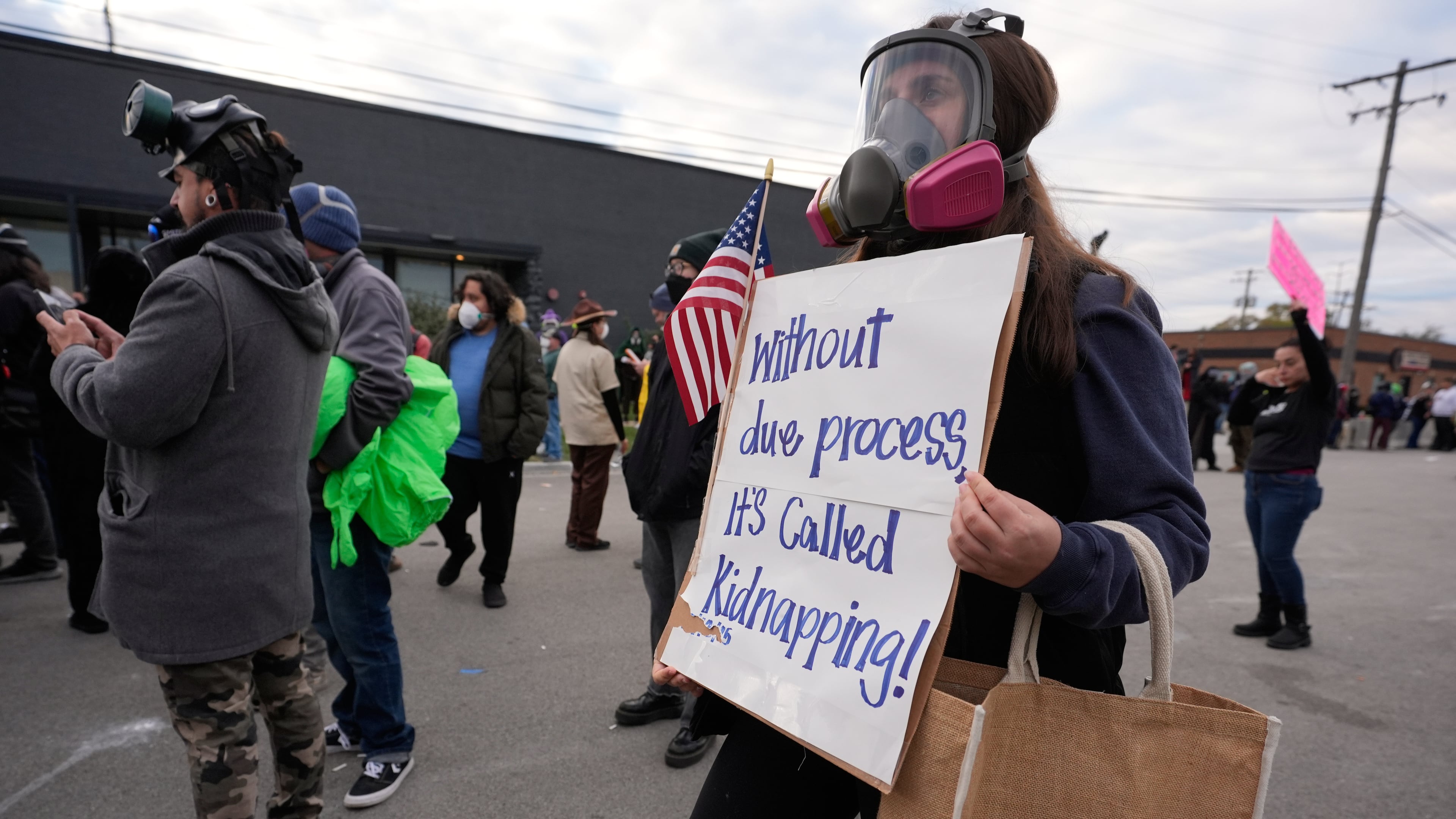Trump administration speeds up new rules that would make it easier to charge some protesters

WASHINGTON (AP) — The Trump administration is speeding up the implementation of new rules that would give the agency tasked with protecting federal government facilities greater authority to charge people for a broader array of offenses on or off those properties.
The changes outlining the powers of the Federal Protective Service, an agency within the Department of Homeland Security, were put forward in early January under the Biden administration and were slated to take effect on Jan. 1 of next year but instead went into effect Wednesday. The administration said the rules were being changed ahead of time so they could address a “recent surge in violence.”
They come as protests have surged against President Donald Trump’s mass deportation agenda, especially near buildings associated with immigration enforcement, such as Immigration and Customs Enforcement offices or facilities. They also come as the Trump administration is facing lawsuits in both Chicago and Portland against what critics say is the excessive use of force by federal officers against protesters and others or unjustified attempts to bring in federal forces to protect facilities.
Activists and many political leaders have accused Homeland Security of aggressively suppressing peaceful protests and targeting activists trying to hold them accountable. Critics said the new rules could be used to target protesters.
“DHS is using every tool possible to protect the lives of our law enforcement as they face a surge in violence and lawlessness at many of our federal facilities,” Assistant Secretary Tricia McLaughlin said in a news release announcing the sped-up schedule. The release cited a shooting at a Dallas ICE facility, an incident that killed two detainees.
The new rules empower officers from the Federal Protective Service to make arrests and charge people for actions near the federal property, and they include new rules regulating unauthorized use of drones and tampering with digital networks.
The Homeland Security news release gave some examples of conduct that the Federal Protective Service could now charge someone for, both on federal property and off, including wearing a mask while committing a crime, obstructing access to federal property and tampering with government IT systems like card readers.
Spencer Reynolds, a former intelligence and counterintelligence lawyer at the Department of Homeland Security who’s now with the Brennan Center for Justice, a think tank, said Congress gave the Federal Protective Service the ability to work and carry out arrests off of federal property as necessary. But he’s concerned that the new regulations codifying these powers will be used as a way to target protesters.
“I see this as being guidance to go after peaceful protests where they are happening in the vicinity or even not in the vicinity of federal property,” he said.
In a report last year issued by the Brennan Center, Reynolds said the FPS expanded dramatically after Sept. 11 and that’s led to “overreach under political pressure.”
In Chicago, a federal judge overseeing a case alleging federal agents carrying out an immigration crackdown there are using excessive force against journalists and protesters said Thursday that she’s going to restrict federal agents’ use of force to prevent the “chilling of First Amendment rights.” U.S. District Court Judge Sara Ellis said she didn’t feel federal agents’ use of force was justified and that she didn’t find their “version of events credible.”
In Portland, the Trump administration has argued that protests at the city’s U.S. Immigration and Customs Enforcement building have gotten so out of control that it justifies sending in National Guard troops to protect federal personnel and property where protests are occurring or likely to occur.
U.S. District Court Judge Karin Immergut Sunday barred the Trump administration from deploying the National Guard to Portland, Oregon, until at least Friday, saying she “found no credible evidence” that protests in the city grew out of control before the president federalized the troops earlier this fall.
The Federal Protective Service is tasked with protecting federal properties. The agency used to fall under the U.S. General Services Administration, which is responsible for purchasing and managing federal real estate, but when the Department of Homeland Security was created in the aftermath of Sept. 11, the FPS was transferred to Homeland Security.

